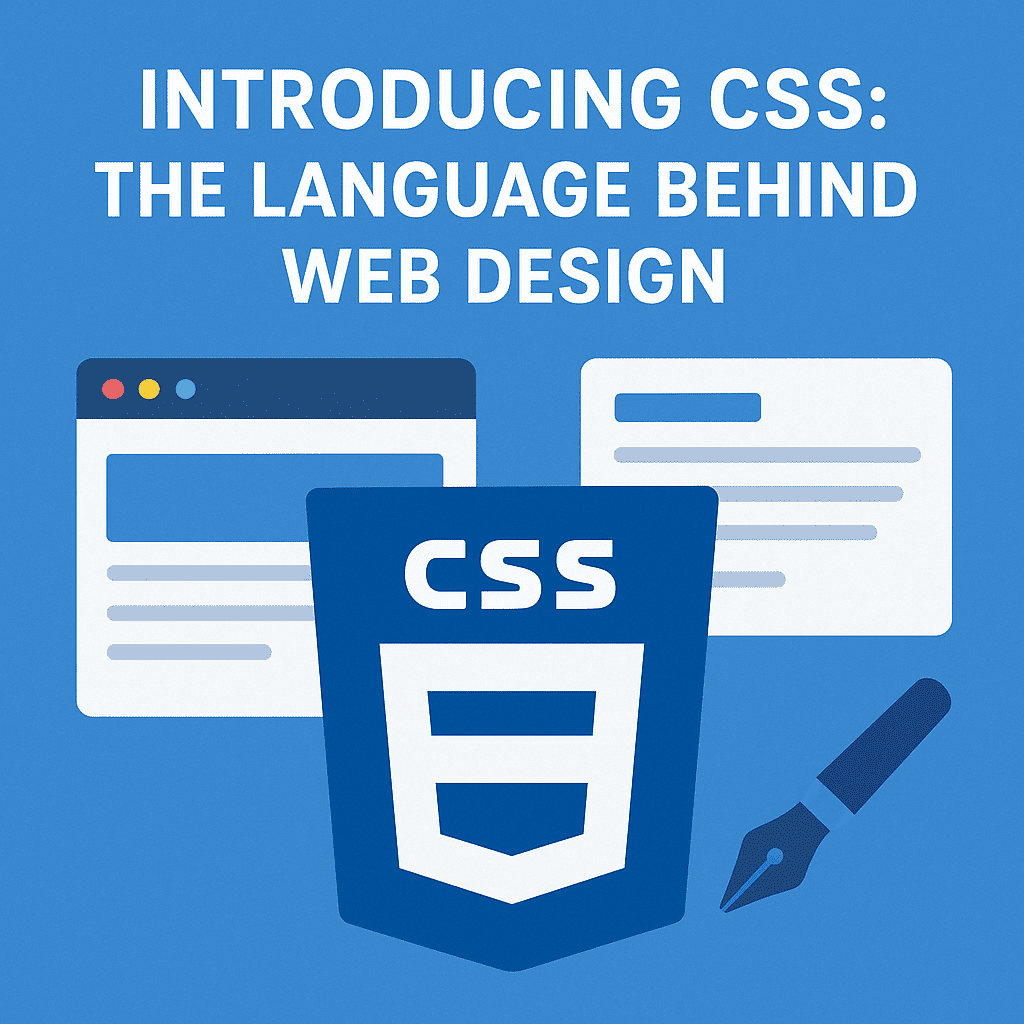
When you browse the internet, the first thing you notice about a website is how it looks—colors, layouts, fonts, and even animations. But have you ever wondered how all of that styling happens? The answer is CSS (Cascading Style Sheets), the language that brings design to the web.
Read More: Introducing CSS: The Language Behind Web Design
In this article, we’ll break down what CSS is, why it’s important, and how it powers the visual side of modern websites.
What is CSS?
CSS (Cascading Style Sheets) is a stylesheet language used to describe how HTML elements should appear on a webpage. While HTML provides structure (headings, paragraphs, images), CSS adds style—from fonts and colors to spacing and layouts. Think of HTML as the foundation of a house and CSS as the paint, furniture, and decorations that make it visually appealing.
Why is CSS Important in Web Design?
Without CSS, every website would look plain and text-heavy. Here’s why CSS is essential:
-
Improves User Experience (UX): A well-styled site is easier to navigate and more enjoyable to use.
-
Consistency Across Pages: CSS allows designers to apply styles globally, keeping the look consistent.
-
Responsive Design: CSS enables websites to adapt seamlessly across desktops, tablets, and mobile devices.
-
Custom Branding: Businesses can use CSS to reflect their brand identity with unique colors, fonts, and layouts.
How CSS Works
CSS uses selectors and rules to style HTML elements. For example:
This snippet makes all <h1> headings appear blue and larger in size. With just a few lines of CSS, you can dramatically change a website’s appearance.
Key Features of CSS
-
Typography Control: Change font styles, sizes, and spacing.
-
Color and Backgrounds: Apply colors, gradients, and background images.
-
Layout Design: Use Flexbox, Grid, and positioning to structure content.
-
Animations and Transitions: Add interactive effects to make pages dynamic.
-
Responsive Design Tools: Create layouts that adjust to different screen sizes.
CSS and Modern Web Design
Today, CSS is more powerful than ever. With CSS Grid and Flexbox, building complex layouts has become easier. Features like dark mode styling and animations also make websites more engaging.
Plus, CSS works hand-in-hand with JavaScript and frameworks like React, ensuring that modern websites are both functional and visually impressive.
Getting Started with CSS
If you’re new to web design, here’s how to begin:
-
Learn basic CSS syntax (selectors, properties, values).
-
Experiment with styling text, colors, and spacing.
-
Explore layout techniques like Flexbox and Grid.
-
Practice building small projects, such as landing pages or portfolios.
Plenty of free resources, like MDN Web Docs, can help you master CSS step by step.
What Is CSS?
At the end of the day, CSS is purely a style language that tells the browser how it should look. When you think about it, HTML is the content – headings, paragraphs, images, buttons – and CSS is the presentation.
Envision a building: HTML is the structure, the walls, and the rooms. CSS is the paint, the furniture, the lighting – everything that makes it pleasing and comfortable.
Without CSS, the internet would be a collection of unfinished, or more accurately, un-decorated buildings.
CSS defines things like:
-
Colors: Should the text be blue or black? Should the background be soft beige or bold red?
-
Fonts: Should the letters be playful and rounded, or sharp and professional?
-
Spacing: Should we refer to breathing room around elements, or tighter-packed elements?
-
Layouts: Should the content be stacked neatly, evenly side by side, or arranged differently depending on the screen size?
All of these considerations contribute to a user’s emotional response to a website. CSS is where technology and artistry meet.
The Evolution of CSS: From Static to Dynamic
CSS has been around since the mid-1990s, and its history is a fascinating story of evolution. Where websites had very little styling available before, designers had very little control over their layout and had to use workarounds for alignment.
Over the years, CSS matured into a more robust styling system:
-
CSS1 (1996) – the original; basic colors, fonts and spacing
-
CSS2 (1998) – more layout and positional control
-
CSS3 (2000 onwards) – a game changer! Designers at one point, almost overnight, had access to gradients, animations, shadows, round corners, and responsive design tools.
It can be said that CSS is continuously evolving with the introduction of new features like Grid and Flexbox, making it easier than ever to take designers’ layouts, initiating a more natural feel when they build their work, and adapting more naturally with the user.
What’s amazing is that CSS has been able to keep pace with how we interact with the web, from the 90s now back to phones and tablets.
Visit Here: https://www.fusion-institute.com/meet-css-the-language-that-styles-the-web
Final Thoughts
CSS is the language behind web design—turning plain HTML into visually stunning, user-friendly websites. Whether you’re just starting your web development journey or want to improve your design skills, learning CSS is the first step to creating beautiful, responsive websites.



